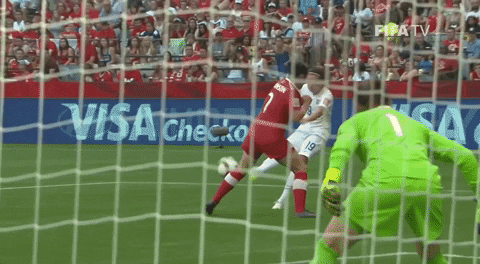NCAA and the history of conference realignment

The GIST: If the flood of headlines about NCAA conference realignment and expansion is making your head spin, you’re not alone — the last two years have seen more shifting alliances than a season of Survivor, with rumors swirling about even more potential moves.
- So today, we’re breaking down the surprisingly common history of conference changes, the latest relocations, and why programs choose to break their proverbial dorm room leases.
The history: Conference moves are nearly as old as college sports, starting in 1899 when what’s now the Big Ten scooped up Indiana and Iowa. The current landscape grew out of both small and monumental shifts, like when large factions split from the Southern Conference to create the SEC in 1932 and the ACC in 1953. All to say, this sh!t is nothing new.
The court case: Today’s deluge can be traced back to the NCAA v. Board of Regents lawsuit. In 1981, an association representing multiple conferences inked a TV deal with NBC, while the NCAA, who had exclusively regulated TV contracts since 1952, had deals with ABC and CBS. The NCAA threatened sanctions to any school appearing on NBC, leading multiple programs to sue the governing body.
- In June 1984, the U.S. Supreme Court found the NCAA in violation of antitrust laws, opening the door for schools to further monetize media rights — and make conference moves that would generate the maximum amount of dough.
The last big boom: College sports have been movin’ and shakin’ ever since: There have been 198 Division I (DI) football conference changes since 1990, including the 1994 birth of the Big 12, all leading to our current Power Five–dominated landscape.
- After the 2012 announcement that Maryland and Rutgers would expand the Big Ten to 14 teams, conference moves surprisingly quieted for nearly a decade, until…
🔮 Current & future moves
The GIST: Thanks to a single tweet that stunned the NCAA Twitter-sphere on July 21, 2021, the latest era of massive conference shifts emerged. Here’s who's doing business with U-Haul…and who might be eyeing future moves of their own.
The headliners: Four schools are at the center of this current realignment. Arguably the biggest shock was last year’s announcement that UCLA and USC would leave the Pac-12 for the Big Ten next year, creating the nation’s first coast-to-coast conference. That said, Oklahoma and Texas’ 2024 Big 12 exit for the SEC has spurred the bulk of 2023’s changes.
The July 1st convoy: Just 17 days ago, 14 schools officially flipped football conferences. Formerly independent BYU, plus three AAC schools — Cincinnati, Houston, and UCF — joined the Big 12. In response, the AAC raided six (!!!) schools from Conference USA (C-USA), spurring three of its remaining eight teams (Marshall, Southern Miss, and Old Dominion) to jump ship for the Sun Belt.
- To meet the NCAA’s six-team minimum, C-USA added independents Liberty and New Mexico State, plus leveled up Jacksonville State and Sam Houston from the FCS to the FBS, to enter the fall with nine football squads.
The power consolidation: The recent and future shifts in the Power Five have heavily favored the already-strong SEC, the Big Ten, and the Big 12, who’s looking to add more to its roster with rumors swirling around Gonzaga, UConn, Memphis, and — amongst other Pac-12 schools — Colorado.
- This has many concerned for the future of the ACC and Pac-12, with the latter in the most precarious position due to their ongoing search for a new media rights deal.
💸 The motives
The GIST: Driving this recent realignment frenzy are the forces that make the entire sports world go ’round: money, fandom, and ego. Thanks to the negotiating power granted to conferences in the aforementioned NCAA v. Board of Regents case, media rights deals are the name of the game.
The media goldmine: Conferences collect on media rights deals with networks and streaming services, with funds passed onto member schools via revenue-sharing agreements. The aforementioned consolidation of power in the Big Ten, SEC, and Big 12 is due, in part, to their massive and growing negotiating capabilities on that front.
- USC and UCLA’s decision to ditch the Pac-12 helped the Big Ten ink its recent seven-year, $7 billion deal with NBC, CBS, and FOX — a deal that puts between $80M and $100M per year in each member school’s pocket.
- Those exits left the Pac-12 desperate to keep others from jumping ship, so they’re now aiming to cobble together a comparable media rights deal — and their very survival may hang on those negotiations.
The prestige: Although there are plenty of talented athletes and teams outside the Power Five, the most elite NCAA competition and the most DI national champs are found in those five conferences. That means the Power Five garners more media attention, more opportunities to go pro, and more clout in the college sports space.
- Revenue-sharing isn’t the only boon media rights deals offer. Better partnerships mean more exposure, bigger fan bases, and better networking opportunities, all of which are crucial for attracting talent in the new NIL era.
- There are, of course, notable exceptions, like this year’s men’s basketball champ and perennial women’s hoops powerhouse, UConn, which recently returned to the Big East after an AAC stint, and has little interest in going Power Five.
↔️ Zooming out
The GIST: It’s not just the finances of less powerful conferences on the line — realignment could create serious administrative headaches in athletic departments or parity problems across the NCAA.
The competition concern: The ever-shifting conference landscape has some worried about a future concentrated in just three Power conferences, potentially decreasing sports’ parity should such a monopolistic trio arise.
- Those concerns aren’t completely unfounded, but with recent moves to boost parity — which is currently at an all-time high — perhaps these fears are simply growing pains.
The exceptions: Many of those moving are doing so to maximize their football programs’ value. Most other sports — but not all — are simply hitching rides across conferences. Teams sticking with their original conferences, like UCLA and USC beach volleyball, could lead to an administrative hassle for their athletic departments.
- That said, this is nothing new for the NCAA. It’s common for sports from the same athletic department to compete in different conferences, especially if the sport is more niche, like water polo or even ice hockey.
- Often, it’s simply a school’s workaround when their conference does not sponsor a specific sport. The SEC, for instance, does not have men’s soccer, so Kentucky’s team competes in the Sun Belt. It’s an effective fix that can leave your head spinning.

